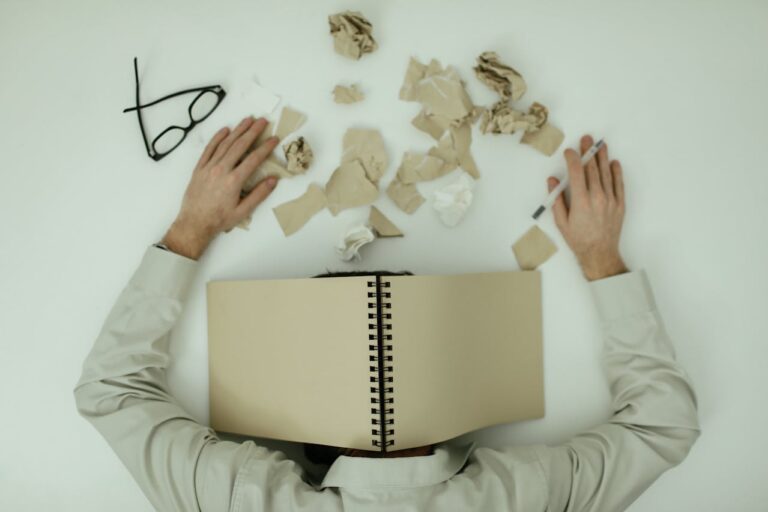Burnout is an issue a majority of journalists are now facing, according to a recent survey, and it’s affecting their ability to report on stories of key public interest.
The Reynolds Journalism Institute conducted a study in late 2023 with over 1000 future, current and former journalists from 50 states about the topic of burnout within newsrooms. Out of those respondents 80% stated that they felt that burnout was a critical issue.
On July 29th, the Society for Advancing Business Editing and Writing (SABEW) opened the conversation about the “Burnout” epidemic that often hits journalists throughout their careers. “Navigating Burnout: A Journalist’s Guide to Staying Fresh in a Fast-Paced World” was a panel discussion focused on recognizing burnout, navigating the demands of a fast-paced newsroom and implementing necessary changes to prevent exhaustion before it hits.
The panel consisted of C.D. Davidson-Heirs, Director of the Student News Watch and membership coordinator of the Education Writers Association, Nasseem Miller, Senior Health Editor for the Journalist’s Resource, and Dave Seglins, Journalist and Well-Being Champion at CBC News. The discussion was led by Randy Picht, Executive Director of the Donald W. Reynolds Journalism Institute.
Experience with burnout
Davidson-Heirs shared her personal experience with burnout while she was a local reporter in Northwest Florida during the COVID-19 pandemic and how it shifted her career as a journalist. Because of the drastic impact of the pandemic on education, Davidson found herself covering two breaking news beats, and people were dying in both of them.
“It was a position that I found myself not being able to say no to. It felt like what I was doing was so much bigger than me,” said Davidson-Heirs. “I lost any sense of boundaries that I had with work.”
Davidson-Heirs was also working from home, like many reporters, and the importance of a physical interview became even more salient, especially with the sensitive topics she was covering.
“What I think is important here is that all the resources I had access to, the boundaries that I had in place, and the routine were all gone,” said Davidson-Heirs. “I want to say I was 24 or 26 throughout this period, so I did not have the language to describe my workplace behavior at the time.”
Davidson-Heirs found herself in her kitchen one day, feeling like she could not do her job anymore, and realized that her current work environment was taking a big toll on her. When Davidson-Heirs was asked to report on the suicide of a teenage boy, she explained that because of how deeply that story resonated with her, she had to turn it down because she wouldn’t have been able to report on it to the best of her ability.
“That’s what burnout felt like to me, and it will present itself differently for everybody, but I did not recognize myself anymore,“ said Davison-Heirs. “It was not that my passion was gone; it was that I physically could not.”
Davidson-Heirs decided to take a break from journalism and the state of Florida. She eventually returned to journalism through a graduate program at the University of Georgia and is still on her journey of healing. She continues to work for the Education Writers Association to assist education reporters across the country. She wanted to curate a program to watch over young journalists and give them the honest reality of what the profession looks like while also helping them gain respect for the profession.
The importance of self-care
From her perspective as a health editor, Miller highlighted self-care as a tool to combat burnout and the importance of prioritizing yourself as a journalist.
“Self-care does not just happen; you have to make time for it,” said Miller. “You have to put it on your planner, put it on your calendar, and give yourself permission to take care of yourself.”
Miller provided a list of various exercises and tools that she personally found helpful to ensure she is receiving a much-needed break and recharge outside of work. She stated that movement, in particular, was a useful tool, and she found that meeting stress with physical activity can make a huge difference in how her body responds to the stress.
She also found art to be a useful tool. The book “Your Brain on Art,” by Susan Magsamen and Ivy Ross, states art is “a way to connect your mind, body and spirit to support your health and wellness,” and Miller agreed with this sentiment. She found that something as physical as pottery or as simple as doodling at your desk for 10 to 15 minutes can help her reset and focus on work when she needs to.
Miller also explains the importance of creating boundaries with work for your own health. If you are on vacation, make sure you are not checking your emails or looking at notifications, and instead allow yourself to truly enjoy that vacation. If you are somebody who may have a hard time seeing the signals of burnout, find yourself a burnout monitor, somebody you trust who can be able to acknowledge and see the signs that you may be missing.
While Miller provided a lot of different solutions and various activities one can do to prevent themselves from overworking, the main point she wanted to convey was the importance of taking the time to check in with yourself and fitting those check-ins within your schedule.
“Listen to your body. If your chest tightens, if your heart rate is up, if your palms are sweaty, or whatever it is that are signs of stress in you, please listen to it and understand that it’s time for you to take a break,” said Miller.
Managing burnout in the workplace
CBC News’ Seglins focused the conversation on the responsibility of the leadership in the newsroom to protect the health of their employees. Seglins believes it is important for newsrooms to be educated on mental health, well-being and what it means to be aware of unhealthy work culture habits. Being able to identify those stressors and understanding the science behind the stress can be impactful on the workplace environment.
“We need to get newsrooms studying and teaching their people more about psychological well-being and how stress accumulates,” said Seglins.
Seglins experienced his version of burnout and PTSD in his career, which led him to talk to his boss about the changes that need to occur within his workplace. Seglins then went on to develop an exercise to encourage a conversation around the type of stress journalism brings. These types of stressors could include the pace of work, workload, traumatic content, harassment and mistrust of the public.
“I think you’ve got to ask yourself number one, what are the key stressors that I’m facing and what can I do to pick apart some of those individual things and find the joys to help combat?” said Seglins.
Seglins advocates for leadership prioritizing and supporting this conversation, as it shouldn’t be solely on the individual reporter. Rather, discussions and training should be encouraged and provided by managers in the newsroom.
“Ever wonder why newsroom bosses and supervisors get a really bad rap? They’re not always the best people managers. Why?” said Seglins. “ Because they’re often promoted for their skills in chasing stories and getting editorial stuff done, they’re not given courses in HR or mental health and well-being, and I think we’ve got to change that.”
He believes holding leadership responsible for checking in on their employees in between work and stories and carving out that open-conversation space within those newsrooms is vital for a healthy space. Creating a space for peer support is also important.











